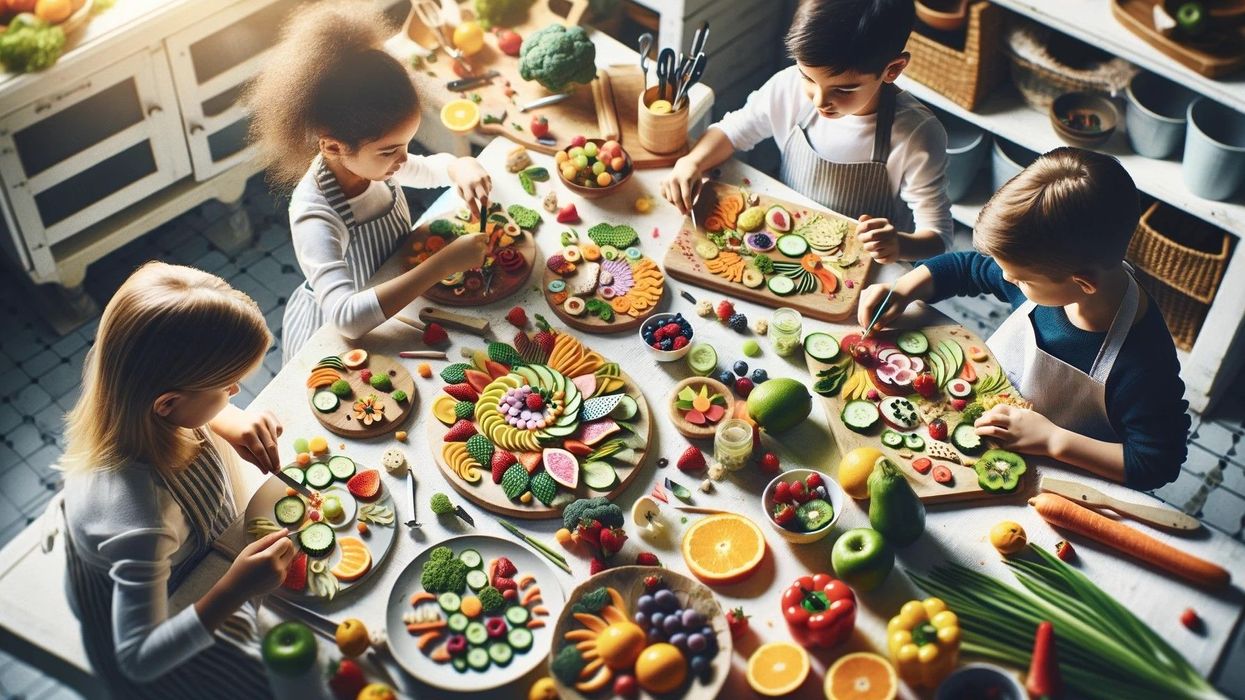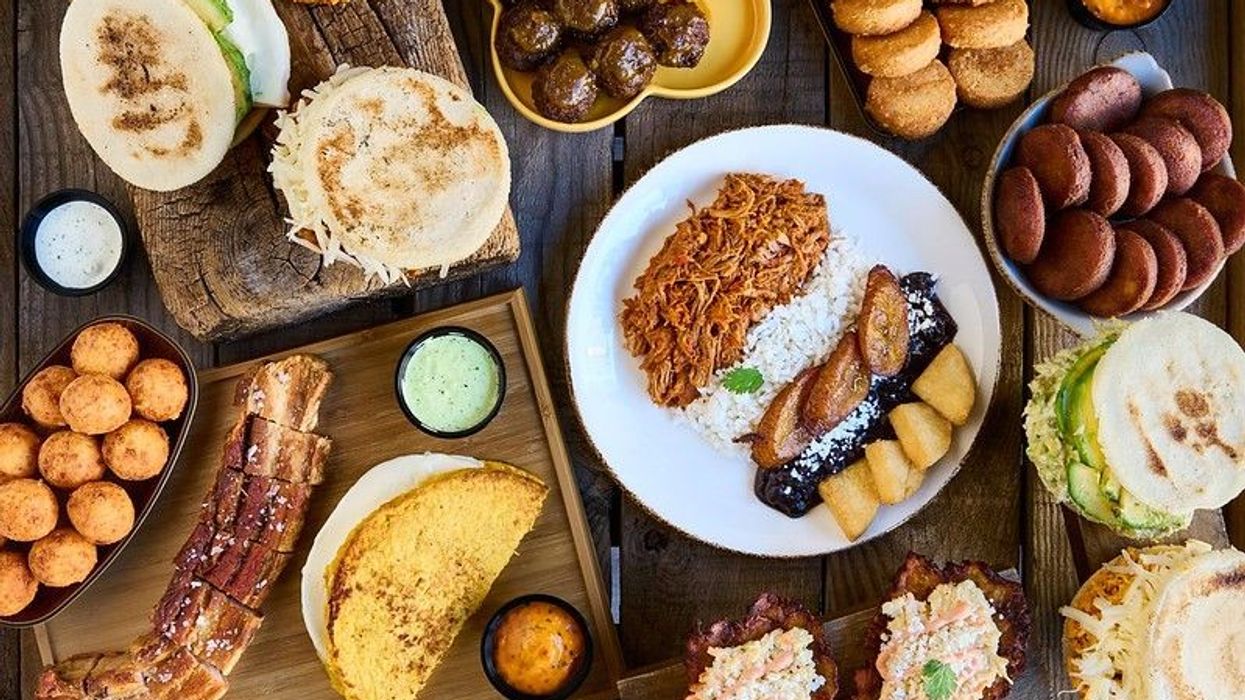Ready to make history in the kitchen with some easy Roman recipes that will teach your KS2 kids all about Roman food?
The Romans were pioneers of many things that still play a prominent part in 21st-century life. Their most influential inventions include roads, central heating, concrete, newspapers, and the modern calendar.
The Romans enduring legacy can also be seen in the way that we eat. Many of the recipes invented by the Romans were detailed in their famous cookery book “Apicius”, and are still enjoyed today.
The Roman diet was rich and varied. They lay on large couches while they ate around a low table, and used their fingers to eat the majority of their food. Like us, they generally ate three meals a day:
- Breakfast was called “ientaculum”.
- Lunch was called “prandium”.
- Dinner was called “cena”.
Roman Food Sources

Image © nadianb under a creative commons licence.
Fruit and Vegetables
The Romans ate a wide range of fruit and vegetables, some that they grew themselves, and others that were imported from around the Roman Empire.
Cereals, Bread, And Porridge
Cereals were fundamental to the Roman diet, particularly for the poorer people who couldn’t afford a variety of foodstuffs. Wheat and barley were the most important cereals and used to make bread and porridge, which were staples of the Roman diet. Pottage, a thick porridge stew made from millet, wheat and corn, was one of the main foods consumed.
Meat
Rich Romans ate a huge amount of meat, including venison, peacock, wild boar, pheasant, beef, pork, chicken, and geese. They even ate dormice! Poor Romans ate meat much less frequently as it was often too expensive for them to buy.
Fish
The Romans consumed a lot of fish and used a fish sauce called liquamen in much of their cooking. We use the same sauce today but it is now better known as garum.
Dairy Products
Ancient Romans ate eggs from a variety of birds, and cheese that was usually made from goat’s milk.
Honey
Romans were very fond of sweet dishes and, as sugar wasn’t available, honey was a key ingredient in many recipes.
Herbs And Spices
Ancient Romans were big fans of herbs and spices, using them to flavour both their food and their wine.
Olive Oil
Olive oil was an essential ingredient in many Roman recipes and meals.
Wine
Watered down wine was the main drink of the Romans and was consumed all day by both the rich and the poor.
How Ancient Roman Food Varied

Image © Pierre Olivier Joseph Coomans / Public domain under a creative commons licence.
Wealthy Romans could afford a varied and highly nutritious diet. They liked to hold elaborate banquets, where vast quantities of expensive food and wine would be served. The majority of the Roman population was not wealthy and could only afford to eat a very limited variety of food.
Their recipes were largely made from cereals, fruit and vegetables. Only rich Romans had kitchens and these tended to be small rooms that housed fire-heated brick hearths and clay ovens. Food was cooked in clay and bronze pots.
Easy Ancient Roman Recipes

Image © Diana under a creative commons licence.
1. Ancient Roman Honey Cookies
The Romans loved honey and used it as the main form of sweetener when baking. Ancient Romans served honey cookies to their guests and also ate cookies similar to the ones in this recipe for breakfast.
- Recipe makes: 15 cookies
- Preparation time: 15 minutes
- Cooking time: 20 minutes
Ingredients
- 300g rice flour or barley flour
- 120g softened butter (can be exchanged for coconut oil if preferred)
- 175g honey
- 2 eggs
- ½ teaspoon baking powder
- ¼ teaspoon ground cardamom (optional)
- 50g sesame seeds
Instructions
- Preheat the oven to 180 C or gas mark 4.
- Lightly grease a baking tray.
- Put the butter and honey into a mixing bowl and beat thoroughly until they are creamy and smooth. If you have an electric mixer, this will speed things up.
- Add the eggs to the bowl and mix well.
- Now add the flour, baking powder and cardamom, and mix until you have formed a dough.
- Roll the dough into small balls and flatten them to about 0.5cm thickness. Alternatively, make the dough into a shape of your choice; the Romans liked to do this.
- Put the sesame seeds into a clean bowl and press one side of each cookie into the seeds. You can also use poppy seeds, hemp seeds or ground almonds in place of the sesame seeds.
- Place the cookies onto the baking tray, with the sesame seed side facing up.
- Bake for 20 minutes, or until golden brown.
- Cool and serve.
2. Ancient Roman Burgers

Image © grinchh under a creative commons licence.
The Romans were pioneers of many things, but did you know they invented the burger? The first recipe for a burger, which the Romans called isicia omentata, can be found in a 1,500 year old Ancient Roman cookbook. Just like us, the Romans enjoyed making burgers at home, and also sold them in fast food outlets.
- Recipe makes: 4 burgers
- Preparation time: 10 minutes
- Cooking time: 10-15 minutes
Ingredients
- 500g minced meat
- 60g pine kernels and green peppercorns (ratio according to taste)
- 3 teaspoons garum
- ½ teaspoon ground pepper
- Handful fresh coriander
Instructions
- Preheat the oven to 180 C or gas mark 4.
- Grind up the pine nuts and peppercorns.
- Chop the coriander.
- Add all the ingredients to a bowl and mix thoroughly.
- Use your hands to shape the mixture into four burgers.
- Place on a baking tray and cook for 10-15 minutes.
3. Ancient Roman Tiger Nut Sweets

Image © tenkende under a creative commons licence.
The Romans adored sweet treats and this recipe, found written on a piece of clay, is one of the oldest in history. This is one of the easiest Roman food recipes for school and for home, as the sweets aren't cooked.
- Recipe makes: 14 sweets
- Preparation time: 20 minutes
- No cooking required!
Ingredients
- 200g fresh dates
- 75g ground almonds
- 30g runny honey
- 30g walnut halves
- ¼ teaspoon cinnamon
- 1 teaspoon cold water
Instructions
- Remove the seeds from the dates.
- Chop the dates and put them into a bowl.
- Add the water and mix well using a fork.
- Chop the walnuts and add them to dates.
- Add the cinnamon and stir the mixture well.
- Pour the honey into a separate bowl.
- Put the ground almonds onto a plate or board.
- Use your hands to shape the date and walnut mixture into balls.
- Dip the balls into the honey and then roll them in the almonds so that they are well coated.
- Place onto a clean plate and they are ready to eat.
4. Ancient Roman Baked Egg Custard

Image © robynmac under a creative commons licence.
This recipe was a popular dessert choice with the Romans, which they enjoyed both hot and cold. When cooled it can be cut into chunks.
- Recipe makes: 4 servings
- Preparation time: 5-10 minutes
- Cooking time: 25-30 minutes
Ingredients
- 3 eggs
- 300ml milk
- 40g honey
- Pinch of nutmeg
Instructions
- Preheat the oven to 150 C or gas mark 2.
- Put the eggs, milk, and honey into a bowl and whisk well.
- Pour the mixture into an ovenproof dish.
- Bake for 25-30 minutes.
- Sprinkle with nutmeg.
- Serve hot or wait for it too cool and then cut into chunks.














